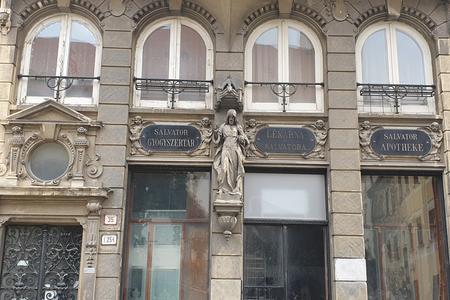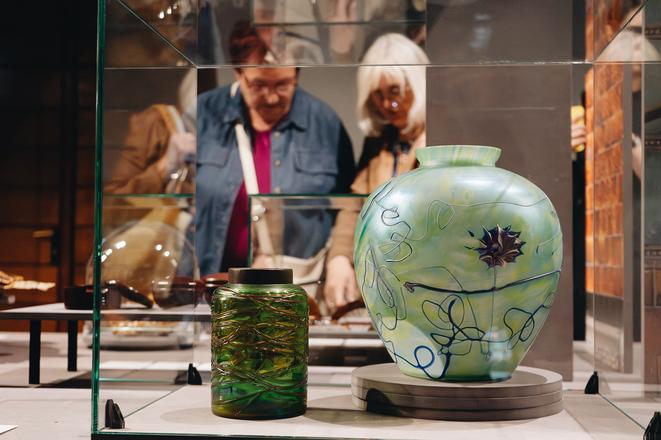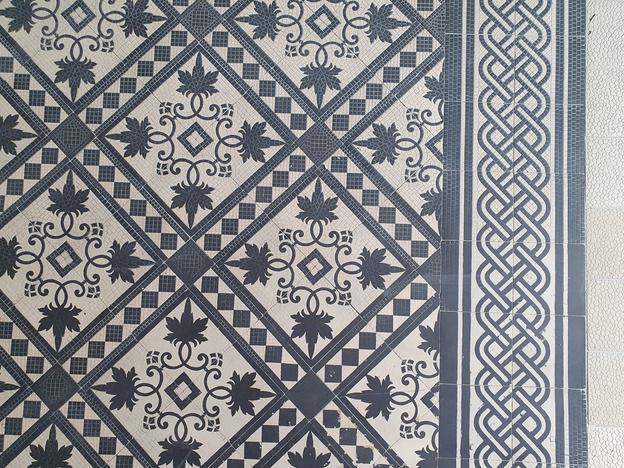When the Titanic set off for its first, and sole, voyage in 1912, its luxurious interiors had flooring very similar to that of the tiles used in the legendary Salvator pharmacy in Bratislava. However, this was nothing special as at the time various companies offered tiles with the same or similar décor.
“At that era trademarks were not observed as strictly as today. Also, these companies operated in different countries, so it was more difficult to protect a trademark,” Štefan Cipár, co-author of the book about tiles and floorings in Bratislava, told The Slovak Spectator. Up to this, this specific pattern was older, inspired by ancient Roman mosaics.
Those tiles used in Titanic were supplied by the German company Villeroy and Boch. Eugen von Boch was an archaeological enthusiast, and the décor he rediscovered became very popular and was used in several places in Europe. The company was the competitor of the Czech manufacturer Rako, the tile supplier for Salvator.

The floor of the Salvator pharmacy kicked off the cooperation between historian Julia Itin and photographer Štefan Cipár, which eventually led to publishing Mosaic of Bratislava: Hidden Tile Floors and Walls by the Čierne Diery (Black Holes) association. After the book became a bestseller, its authors and the Bratislava City Museum took another step, interconnecting the history of Bratislava tile floors and walls with objects in their collections in an exhibition.
“When I was looking at the photos of the floors and interiors, works of applied art suddenly flashed before my eyes,” said Jana Švantnerová, curator of the exhibition Bratislava Tiles and Art of Material Mimesis. She adds that while one tile reminded her of decorative items made from tortoiseshell, the other recalled Art Nouveau iridescent glass or embroidery. “Bratislava floors perfectly match the rich collections of the Bratislava City Museum.”



 Ceremonial opening of the Bratislava Tiles and Art of Material Mimesis exhibtion. (source: Courtesy of MMB )
Ceremonial opening of the Bratislava Tiles and Art of Material Mimesis exhibtion. (source: Courtesy of MMB )
 The flooring in the Salvator pharmacy. (source: Sme)
The flooring in the Salvator pharmacy. (source: Sme)